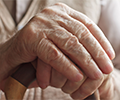June 2024 Br J Cardiol 2024;31:58–60 doi:10.5837/bjc.2024.022
Lucy Beishon, Rebecca Jayasinghe, Carys Barton, Shahbaz Roshan-Zamir
Abstract

Introduction
Despite notable advances in care, cardiovascular disease remains a leading cause of morbidity and mortality in the UK.1 Currently, about one million people in the UK are living with heart failure (HF), and the prevalence increases significantly with age.1 There is a strong relationship between HF and increasing age, with 80% of all cases occurring in those aged over 60 years.1 Although mortality from HF has declined, the number of people living with disability has increased, particularly among older people.2 Moreover, about 385,000 people are living with undiagnosed and untreated HF, and people can wait up to three years for a d
|
Full text
May 2019 Br J Cardiol 2019;26:63–6 doi:10.5837/bjc.2019.019
Janine Beezer, Titilope Omoloso, Helen O’Neil, John Baxter, Deborah Mayne, Samuel McClure, Janet Oliver, Zoe Wyrko, Andy Husband
Abstract

Introduction
Frailty is a distinctive health state, related to the ageing process, in which multiple body systems gradually lose their in-built reserves, and is related to poorer outcomes.1 There have been numerous tools developed to identify frailty,2-4 often these tools are complex and not suitable for identifying patients at the time of admission to hospital, requiring a comprehensive geriatric assessment to validate them. The British Geriatrics Society developed the Frailsafe5,6 checklist, which was piloted across 12 UK hospitals in 2014 as part of the Frailsafe collaborative. The tool used three screening indicators to identify patients
|
Full text

January 2019 Br J Cardiol 2019;26(1) doi:10.5837/bjc.2019.001
Srikanth Bellary, Alan J Sinclair
Abstract

Frailty is strongly associated with cardiovascular disease (CVD) and, while the precise pathophysiological mechanisms linking frailty and CVD remain to be elucidated, it is likely that this association is bi-directional.4,6,7 Loss of muscle mass and function (sarcopaenia), insulin resistance and chronic low-level inflammation observed in the frailty state can predispose to CVD. On the other hand, the presence of CVD can lead to reduced activity, muscle loss and exhaustion, thus, predisposing to frailty. Large cross-sectional and longitudinal studies have shown that those with CVD were up to two to three times more likely to be frail than tho
|
Full text



